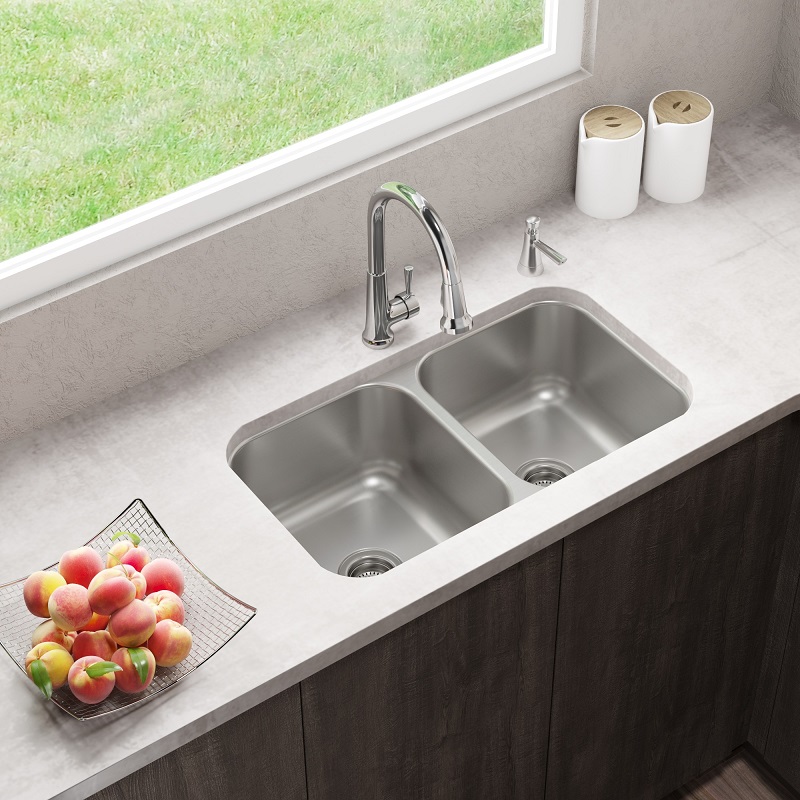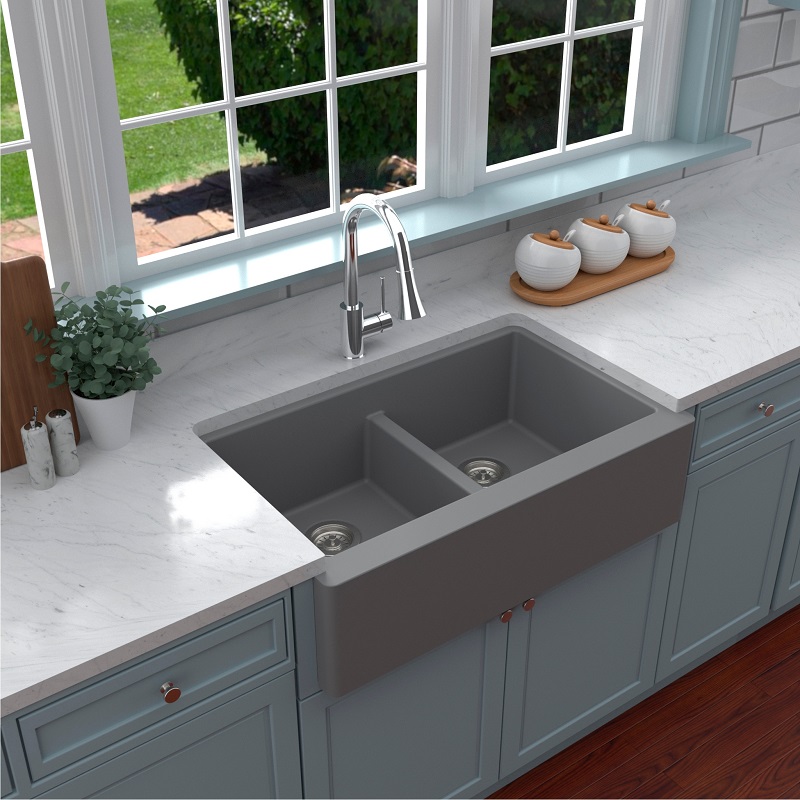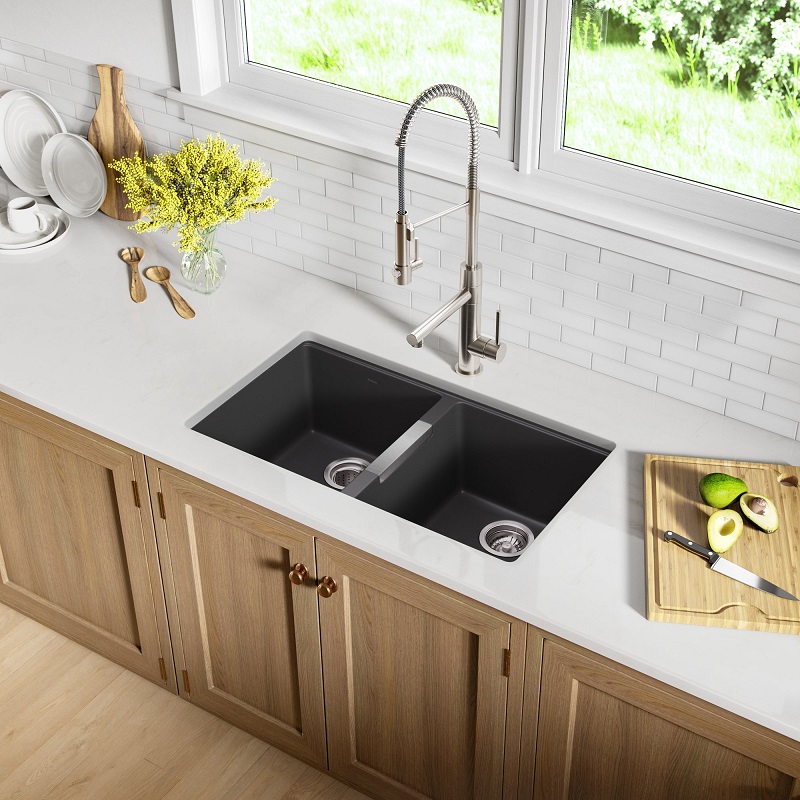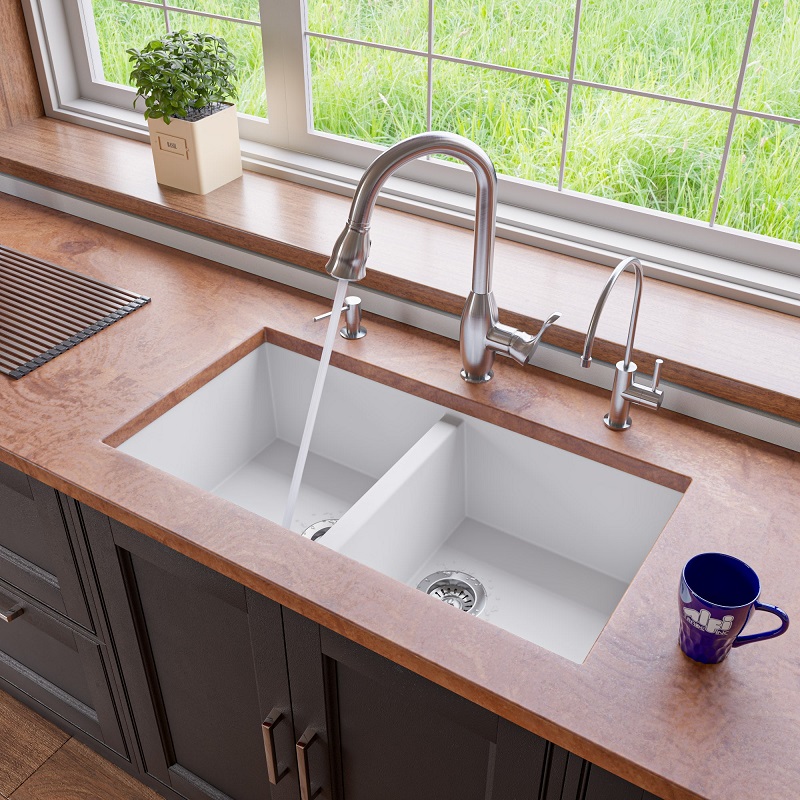Understanding the Double Kitchen Sink
Historical Context of Double Kitchen Sinks
Double kitchen sinks have been a staple in many homes for decades, originally designed to enhance functionality in the kitchen. Historically, these sinks provided a solution for busy households, allowing individuals to multitask—washing dishes in one basin while preparing food or rinsing vegetables in the other. This design became particularly popular in the mid-20th century, when kitchens were often seen as the heart of the home, where family gatherings and culinary creativity thrived.
The introduction of plumbing advancements further cemented the double sink’s place in kitchen design. As households transitioned from communal wash areas to dedicated kitchen spaces, the need for efficient water use grew. The double sink became a symbol of modernity, showcasing the ability to streamline kitchen tasks. However, as design trends evolved, questions began to arise about their relevance in contemporary kitchens.
Evolution of Kitchen Design Trends
Over the years, kitchen design trends have shifted dramatically. The rise of minimalist aesthetics and open-concept layouts has led many homeowners to reconsider the functionality and style of their kitchens. In recent years, single-basin sinks have gained popularity, driven by the desire for sleek, uncluttered designs. The idea of a spacious sink that can accommodate larger pots and pans without dividers appeals to those who favor simplicity and elegance.
The kitchen’s role has also expanded; it now serves as a social space, with more focus on entertaining and aesthetics. As such, the functionality of a double sink has been scrutinized. Homeowners are seeking solutions that cater to their evolving needs, questioning whether a double sink enhances or complicates their kitchen experience.

Pros and Cons of Double Kitchen Sinks
Advantages of Double Kitchen Sinks
Despite the rise of single-basin sinks, double kitchen sinks still offer several advantages that resonate with many homeowners. The primary benefit is the versatility they provide. With two separate basins, users can easily tackle multiple tasks simultaneously. For example, one side can be used for washing dishes, while the other can hold soapy water or be used for rinsing vegetables. This can significantly streamline meal prep and cleanup processes, making it an ideal choice for busy families.
Moreover, double sinks are often larger, allowing for more flexibility in terms of washing larger pots and pans. Home cooks frequently find themselves in need of more space, especially during holiday seasons or when hosting gatherings. The separation of tasks can also reduce the risk of cross-contamination, as different food items and dishes can be kept in separate basins.
Disadvantages of Double Kitchen Sinks
On the flip side, double kitchen sinks do have their drawbacks. One of the main criticisms is that they can take up valuable counter space, which is especially problematic in smaller kitchens. With the trend towards minimalism and open spaces, many homeowners are prioritizing counter space and opting for a single, larger sink that allows for more workspace.
The Modern Kitchen: Shifts in Preferences
Changing Homeowner Needs
As families evolve and lifestyles change, so too do the needs of homeowners when it comes to kitchen design. The modern kitchen is often a multi-functional space, used for cooking, entertaining, and even remote working. This has led many to prioritize functionality that complements their daily activities, leading to a reevaluation of traditional fixtures such as double sinks.
In today’s fast-paced world, homeowners are looking for efficiency and ease. Many prefer appliances and fixtures that allow for quick and convenient use. The rise of dishwashers has also influenced this shift; with many households relying on this appliance, the need for two separate basins may seem less critical. Consequently, single-basin sinks have become a more appealing option for those seeking streamlined designs.
The Influence of Lifestyle Trends
The growing trend toward sustainability and eco-friendliness is also impacting kitchen design preferences. Homeowners are increasingly considering the environmental implications of their choices. For instance, single-basin sinks often require less water, especially when paired with modern faucets that feature water-saving technologies. This eco-conscious mindset encourages homeowners to reevaluate traditional fixtures that may not align with their values.
Furthermore, the desire for personalization in kitchen design has led to more custom options that cater to individual preferences. Homeowners are increasingly exploring innovative designs, such as farmhouse sinks or integrated sinks that blend seamlessly into countertops. This personalization reflects a broader trend of moving away from conventional designs, including double kitchen sinks.

Expert Opinions on Kitchen Sink Trends
Insights from Interior Designers
Interior designers and kitchen experts are weighing in on the debate surrounding double kitchen sinks. Many agree that while double sinks have their merits, they may not be the best fit for every home. Designers often emphasize the importance of understanding the homeowner’s lifestyle and cooking habits when choosing sink designs. For families who entertain frequently or cook large meals, double sinks can still be a practical choice.
However, designers also note the growing preference for single-basin sinks in contemporary designs. These sinks allow for a cleaner aesthetic and offer a more open feel in the kitchen. Some designers advocate for a mixed approach, suggesting that homeowners consider a large single basin paired with a separate prep sink. This solution provides the benefits of both options, allowing for versatility without compromising on style.
Opinions from Homeowners
Homeowner experiences also provide valuable insight into the modern sink debate. Many who have switched from double to single sinks report satisfaction with their decision, citing improved functionality and easier cleaning. They appreciate the larger basin for washing large pots and pans, and the minimalist aesthetic that single sinks can provide.

The Role of Technology in Kitchen Sinks
Smart Sinks and Modern Innovations
With advancements in technology, kitchen sinks are also evolving. Smart sinks equipped with sensors and touchless controls offer convenience and hygiene, making them attractive options for modern kitchens. These innovations can enhance the functionality of both single and double sinks, allowing for easier use while maintaining a sleek appearance.
Furthermore, many modern sinks come with built-in features, such as integrated cutting boards, colanders, and even dish racks. These features cater to the desire for efficiency in the kitchen, allowing homeowners to maximize the utility of their sink area without sacrificing style. This shift towards technology-driven solutions is influencing design choices, encouraging homeowners to consider more innovative sink options.
Sustainability in Sink Design
As sustainability becomes a primary concern, many manufacturers are designing sinks with eco-friendly materials and water-saving features. For example, many modern sinks are made from recycled materials, promoting a greener approach to home design. Additionally, faucets with smart flow control can help minimize water usage, making a significant impact over time.
The Future of Kitchen Sink Designs
Predictions for Design Trends
Looking ahead, it’s clear that kitchen sink designs will continue to evolve in response to changing homeowner preferences and technological advancements. While double sinks may not disappear entirely, their prominence may diminish as more homeowners gravitate toward single-basin designs or innovative options that combine the best of both worlds.
Emerging trends indicate that customization will play a significant role in the future of kitchen design. Homeowners are increasingly looking for sinks that reflect their personal style while meeting their practical needs. This could lead to a rise in unique shapes, colors, and materials that break away from traditional norms.
The Lasting Appeal of Double Sinks
Despite the challenges facing double kitchen sinks, there remains a segment of the market that appreciates their functionality. For those who frequently cook, entertain, or manage busy households, double sinks can still offer valuable benefits. As kitchen design continues to evolve, it’s likely that double sinks will adapt alongside other trends, potentially incorporating modern features while retaining their classic appeal.
Conclusion: Making the Right Choice for Your Kitchen
Evaluating Personal Needs
In conclusion, the debate over whether double kitchen sinks are outdated is multifaceted and subjective. Homeowners must assess their own needs, preferences, and kitchen dynamics before making a decision. For some, the practicality and versatility of a double sink are indispensable, while for others, a sleek single basin may be more in line with their aesthetic and functional goals.


